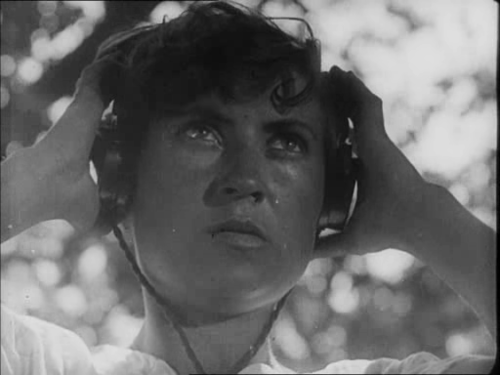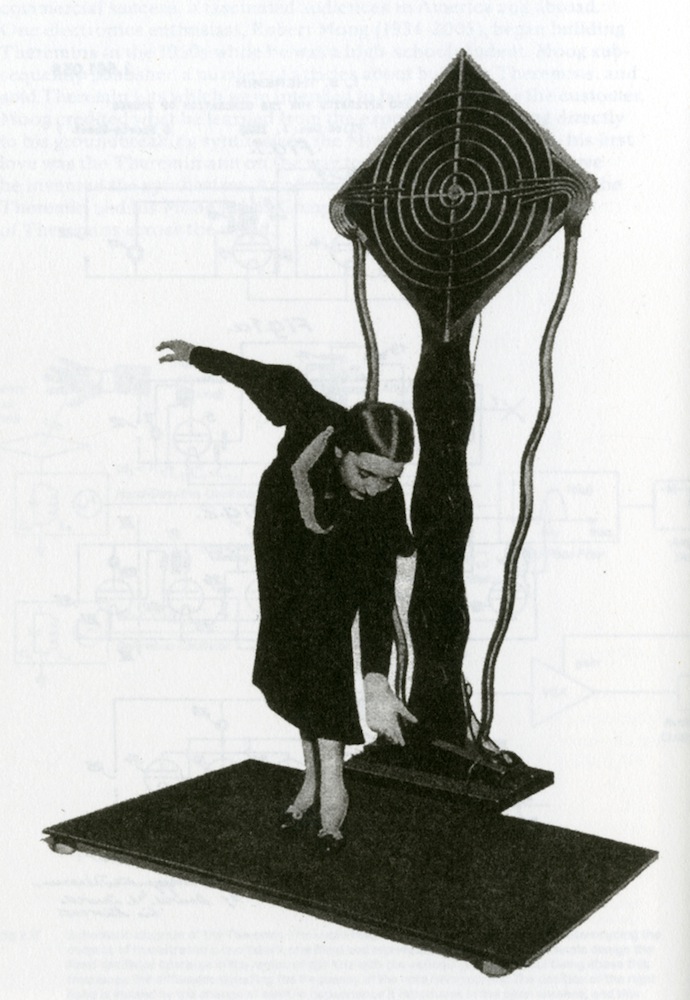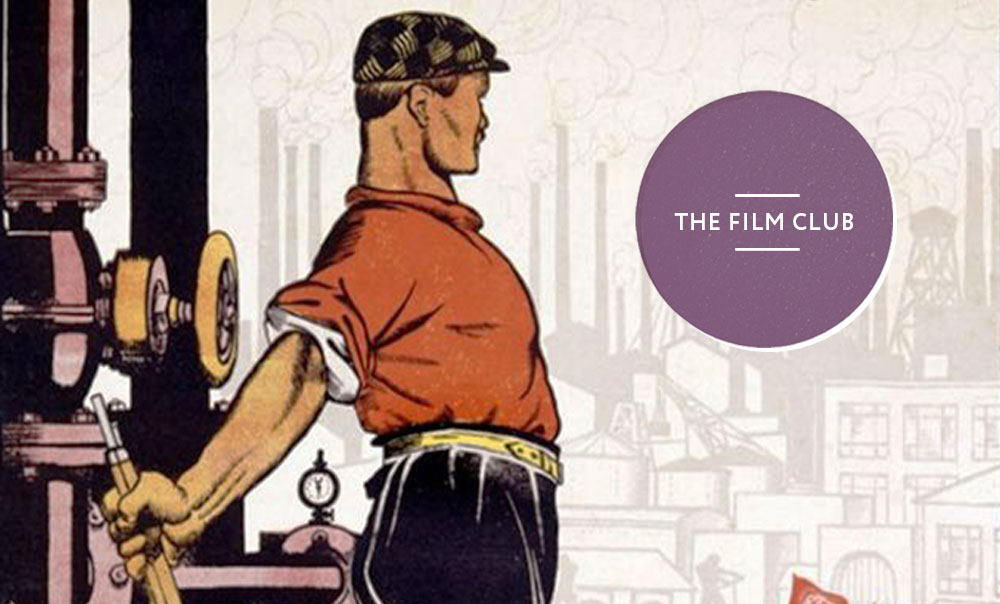Waves of the future: rediscovering Russia’s sound art pioneers

Sound in Z is a comprehensive new telling of the extraordinary story of the experimental fusion of sound, art, music and film in 20th-century Russia. Agata Pyzik salutes author Andrey Smirnov and celebrates the innovative heroes of the Soviet avant-garde
East European sound art is enjoying something of a moment right now. In London, Calvert 22 is hosting Sounding the Body Electric, an exhibition of East European sonic innovations from the Fifties to the Eighties, previously shown at the Muzeum Sztuki in Łódź. And now Andrey Smirnov, one of the most prominent researchers of early Soviet experimental music, has finally published his magnum opus, the long-awaited Sound in Z, which will surely be the definitive book on the subject.
Visitors to the Calvert 22 show may be surprised by the incredible interdependence of science and culture in post-war sound art in the Soviet bloc, the way it developed in parallel with scientific inventions like cybernetics, the perfect combination of mathematics and electricity. But, as Smirnov’s books shows, this fusion of creativity and technology didn’t come from nowhere. Before the crucial watershed of the Second World War, inventors, scientists and artists working under early Bolshevik rule had already been busy creating many of the inventions which the later generation inherited — a fact which is not stressed enough in histories of post-war electronic music and cybernetic, kinetic art. The relative relaxation in the mid-Fifties, after Stalin’s death and as recompense for uprisings in Hungary and Poland, meant in many cases a return to the forgotten inventiveness of the original Soviet artists, the avant-garde who, like the Bolsheviks whom they mostly supported wholeheartedly, believed that the time was ripe for humanity to undergo a great transformation.
“Z signifies the spark, the zigzag of the radio wave”
The intense development of scientific ideas at this time could be compared to the Renaissance, not only because the artists involved were equally polymathic, but also because in both epochs divine immateriality came to be replaced with technological precision. Smirnov calls these pioneers Generation Z. Why? Partly because of the proliferation of the radio waves and electrical currents, which fed the imagination of this era. Z signifies the spark, the zigzag of the radio wave, lightning, electrical spasms of energy, and thus somehow represents the esoteric energy of something necessarily dematerialising in the act of dialectical transformation.

Clara Rockmore plays the terpsitone, an electronic instrument invented by Léon Theremin, at Carnegie Hall in 1932
A comparison of the two eruptions of originality either side of the war reveals their similar histories: first the beautiful rise and then politically motivated destruction. For the avant-garde, this came with Stalinist repressions; for post-war experimenters the end came with the Brezhnev-era of stagnation, beginning in 1968 with the Soviet invasion of Czechoslovakia. The later generation, although eventually also suppressed, did not, however, share their predecessors’ strong political convictions. Although Smirnov’s picture of sound art in the Twenties is a prodigiously technically detailed panorama of an art which could only have arisen in Soviet conditions, the author remains sceptical as to whether Soviet rule was necessary for this art to flourish. But surely Lenin’s passion for “the electrification of the whole nation” as an essential element of communisation was an inspiration for a new art which, according to Commissar of Enlightenment Anatoly Lunacharsky, was to be as experimental as the politics of the new state — a self-consciously forward-looking “Art of the Future”.
“The ‘Theremin’ is not a simple ‘new musical instrument’ … it’s the first big step into the future, into our future, it is a social revolution in the art of making music”
While many of the experimental artists in the post-Stalin cultural “thaw” who enjoyed state support probably did so for pragmatic reasons, the artists of revolutionary Russia wanted their art to embody communism. Smirnov implies that avant-garde Russian artists couldn’t really have believed in the system, as they mostly came had anarchist backgrounds. But this doesn’t make them necessarily opposed to the communist project. Their meticulous instruments, created in ridiculously primitive conditions, conveyed the rapid industrialisation of a country destroyed by civil war. Arseny Avraamov’s Symphony of Sirens, performed across the factories of Baku in 1922, made use of hydroplanes, machine guns, factory sirens, the foghorns of the entire Caspian fleet, the horns of steam locomotives and artillery fire — all controlled with coloured flags and field phones by the conducting composer.
Unlike Pierre Schaeffer and Karlheinz Stockhausen, who are often seen as the founding fathers of electronic music, the Soviet pioneers never saw sound in an abstract way; for them, it never lost its connection to the social and material world and to the aim of changing the world. For Avraamov, the “primitiveness” of his Symphony of Sirens wasn’t a goal in itself, but a necessary means to achieve something more sophisticated. Avraamov was equally enthusiastic about others’ work. After a presentation of the theremin in 1927, he said: “The ‘Theremin’ is not a simple ‘new musical instrument’ … it’s a solution to a huge social-scientific-art problem; it’s the first big step into the future, into our future, it is a social revolution in the art of making music.”
Léon Theremin, born Lev Termen, is the absolute star of Sound in Z. Creator of the first electronic instrument in the world, the famous theremin (and uncountable others), based on the electronic manipulation of air, for his whole life Theremin had to balance his astonishing musical innovations with political pressures; at one point he was even forced to assist state espionage.
Another significant figure in the book is Dziga Vertov, who, fans of Russian film may be surprised to learn, only came to film through an interest in sound editing that he acquired as a student of music. Vertov had a lifelong obsession with the rhythmic organisation of sound. His most startling work, Enthusiasm: Symphony of the Donbass, is a quite terrifying apotheosis of labour that emphasises its hardship and aggrandises the workers. Vertov splices together radio broadcasts and the clanging of industrial machines. Charlie Chaplin is said to have called it “the greatest symphony I’ve ever heard” and to have been inspired by it in his use of industrial noise in Modern Times.
Vertov’s industrial symphony was, in turn, influenced by new theories of the body’s relationship to the machine. The idea of “biomechanics”, promoted by the Central Institute of Labour and its radical founder Alexei Gastev, haunted the minds of Soviet intellectuals; iconoclastic theatre director Vsevolod Meyerhold famously adapted it fro the stage. Although close to an idea of a fusion of man and machine, this was not about hatred of the human, but rather creating a New Man whose life would be more pleasant and creative thanks to living symbiotically with technology.
Smirnov had full access to archival documents, so we learn a lot about the sad endings of so many of the careers here, after the rise of Stalinism. Some innovators still tried to do radical things under Stalin, such as Vertov’s use of clashing radio signals and folksongs in Three Songs of Lenin, but the new leader wasn’t as tolerant of avant-garde innovators as Lenin, who was so interested in the electric proprieties of the theremin that he asked its creator to give him lessons. The consequences were tragic. Theremin, who returned to the USSR from America in 1938, became a lifelong prisoner of the KGB, for whom he had to invent more and more sophisticated systems of wiretapping. Others died in the Gulag after being destroyed as artists, like Yevgeny Sholpo, the inventor of the variophone, or were executed in the purges, like Gastev or Meyerhold.
In both the post-war Thaw and the post-revolutionary avant-garde, artists wanted to make points with electronic sound using similar techniques, but in very different circumstances, and with very different equipment. Sound in Z finally makes this hidden world of unimaginable inventiveness available, but it also inspires melancholy over how many of those geniuses had the misfortune to attempt their revolution in times that proved to be more than hostile. The world wasn’t ready.
Calvert 22 is a sister project of The Calvert Journal. Sounding the Body Electric runs until 25 August 2013 at 22 Calvert Avenue, London, E2 7JP.


